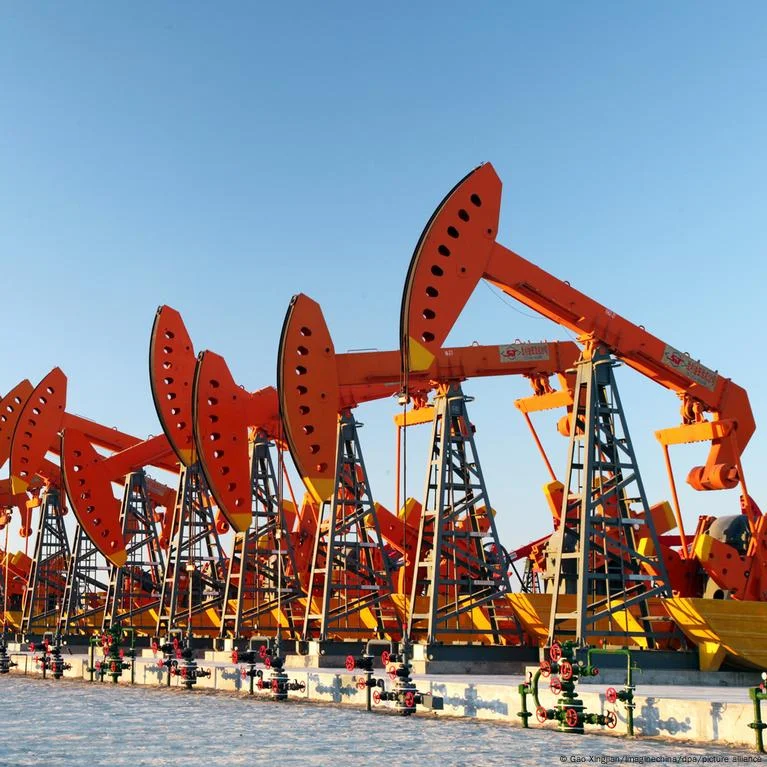
Concerns Rise as Falling Oil Prices Signal Economic Turbulence
The global oil market is experiencing significant upheaval as falling prices raise concerns about the international economic landscape. The recent decline in Brent crude prices, which have dropped to levels not seen since the COVID-19 pandemic, points to deeper issues within the economy that could have far-reaching implications.
Brent crude, which had been trading near $60 per barrel, plummeted following U.S. President Donald Trump’s announcement of new tariffs on April 2. The tariffs, part of a tit-for-tat trade war with China, have contributed to uncertainty in the global market. Carole Nakhle, CEO of energy consultancy Crystol Energy, highlighted that this uncertainty, coupled with a surplus in oil supply and weak demand, has severely affected prices. "The ongoing level of uncertainty and the abrupt policy changes have created a perfect storm for oil prices," she stated.
Further compounding the situation, the OPEC+ coalition, which traditionally aims to maintain high oil prices by limiting output, has announced plans to increase production significantly in May. This unexpected decision is aimed at countries like Kazakhstan and Iraq, which have repeatedly violated agreed-upon quotas. This pivot not only shocked the market but has also further pushed prices down, hitting revenues for countries reliant on oil exports.
As the situation develops, further implications emerge for nations like Russia, which has benefited from high oil prices since the invasion of Ukraine. Analysts suggest that falling prices could severely impact Russia’s economy and its military endeavors. Inflationary pressures and increased defense spending—set to reach a staggering $122 billion in the coming years—rely heavily on stable or rising oil revenues. Chris Weafer, an investment adviser familiar with the region, warns that sustained low prices could force the Russian government to reconsider its approach to military spending and foreign policy.
Interestingly, Trump has touted the falling prices as a sign of economic prowess, boasting on his platform that they are "down at levels nobody ever thought possible." However, many economists view this trend with skepticism, including prominent financial institutions like Goldman Sachs, which posits that prices could dip below $40 per barrel by late 2026 under extreme circumstances.
The situation reveals that while consumers may enjoy lower gas prices, the long-term consequences of plummeting oil prices are notably more complex and troubling. Countries like Russia and members of OPEC+, which depend heavily on oil income, might find themselves in precarious positions. As alternative energy sources grow in popularity and demand shifts, it remains to be seen how these nations will adapt to a potentially prolonged period of lower prices.
As we navigate these uncertain economic waters, one question emerges: How will nations respond to the dual pressures of a saturated oil market and global economic predictions of a downturn? The international community watches closely, aware that the repercussions of these choices will resonate far beyond the oil fields.
Related issues news
Why are crude oil prices down?
Oil prices have crashed to their lowest point since 2021 due to the escalating US-China trade war. Analysts fear the trade war will lead to a global recession, significantly reducing oil demand.
Did crude oil prices drop?
Brent sank below $60 a barrel, falling to the lowest level since February 2021. The Reuters Tariff Watch newsletter is your daily guide to the latest global trade and tariff news. Sign up here. Past oil price crashes have forced painful reforms for governments that rely on income from crude exports.
How will tariffs affect oil prices?
How will tariffs affect oil and gas markets? The main impact will be indirect through weaker commodity demand and prices. Our scenario analysis suggests that lower global GDP growth stemming from Trump's initial position will reduce oil demand for 2026 by about 1 million b/d and prices in 2026 by US$7/bbl.
Does China have tariffs?
China Customs assesses and collects tariffs. Import tariff rates are divided into six categories: general rates, most-favored-nation (MFN) rates, agreement rates, preferential rates, tariff rate quota rates, and provisional rates. As a member of the WTO, imports from the United States are assessed at the MFN rate.